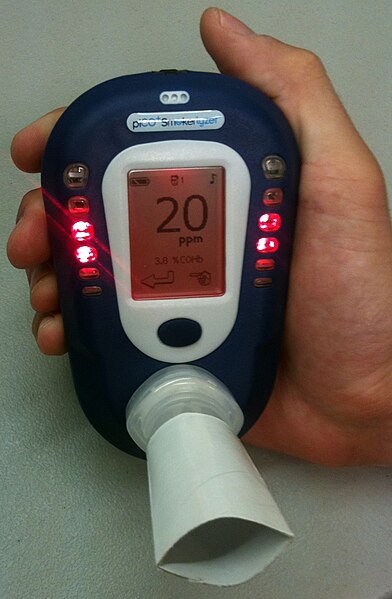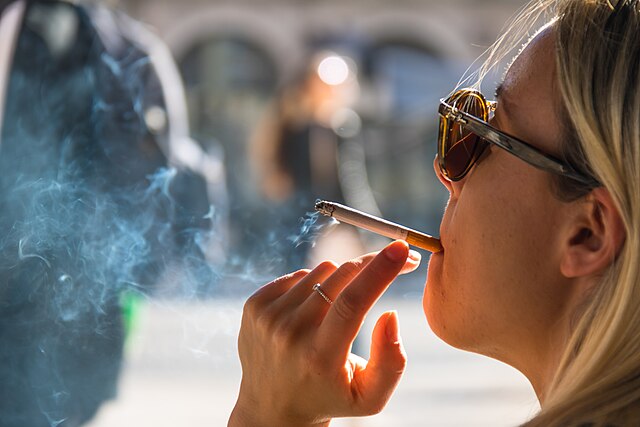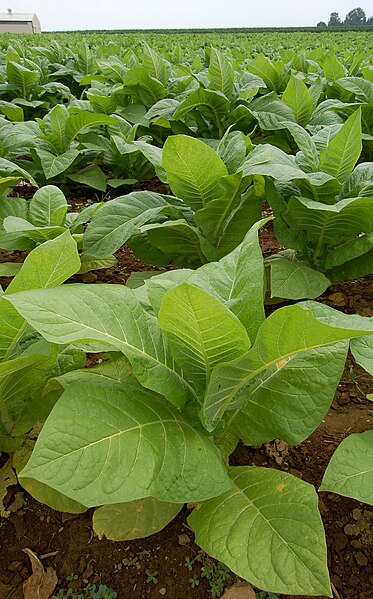Passive smoking is the inhalation of tobacco smoke, called passive smoke, secondhand smoke (SHS) or environmental tobacco smoke (ETS), by individuals other than the active smoker. It occurs when tobacco smoke diffuses into the surrounding atmosphere as an aerosol pollutant, which leads to its inhalation by nearby bystanders within the same environment. Exposure to secondhand tobacco smoke causes many of the same diseases caused by active smoking, although to a lower prevalence due to the reduced concentration of smoke that enters the airway.
Tobacco smoke in an Irish pub before a smoking ban came into effect on March 29, 2004
Breath CO monitor displaying carbon monoxide concentration of an exhaled breath sample (in ppm) with corresponding percent concentration of carboxyhemoglobin displayed below
Tobacco smoking is the practice of burning tobacco and ingesting the resulting smoke. The smoke may be inhaled, as is done with cigarettes, or simply released from the mouth, as is generally done with pipes and cigars. The practice is believed to have begun as early as 5000–3000 BC in Mesoamerica and South America. Tobacco was introduced to Eurasia in the late 17th century by European colonists, where it followed common trade routes. The practice encountered criticism from its first import into the Western world onwards but embedded itself in certain strata of a number of societies before becoming widespread upon the introduction of automated cigarette-rolling apparatus.
A woman smoking a cigarette, the most common method of tobacco smoking
Aztec women are handed flowers and smoking tubes before eating at a banquet, Florentine Codex, 16th century.
Tobacco field in Intercourse, Pennsylvania
Basma leaves curing in the sun at Pomak village of Xanthi, Thrace, Greece






